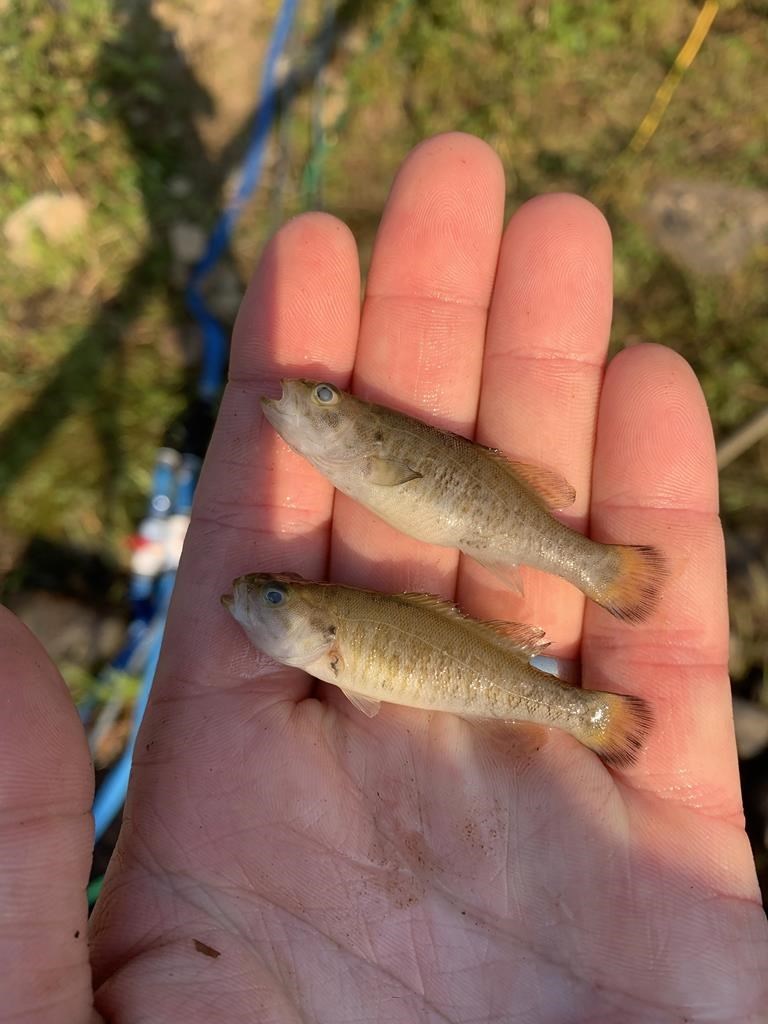MIRAMICHI, N.B. — A group that used a pesticide to rid New Brunswick’s Miramichi watershed of invasive smallmouth bass has stopped the program after years of controversy over the strategy.
The group, composed of Indigenous and non-governmental organizations, said Friday it would abandon the rotenone program after its members were unable to convince the provincial government to take the lead on the project to eradicate the non-native species.
As well, a number of smallmouth bass were caught outside the treatment area this summer, suggesting the fish have spread beyond the program's target zone, said Neville Crabbe, spokesman for the Working Group on Smallmouth Bass Eradication.
“Those two factors were the major considerations in our decision,” Crabbe said in an interview.
Smallmouth bass, first detected in the Miramichi watershed in 2008, can alter ecosystems by preying on native species of fish such as Atlantic salmon and brook trout.
A rotenone treatment in Lake Brook and along a 15-kilometre section of the Southwest Miramichi River in September 2022 killed hundreds of fish: 514 Atlantic salmon and 32 smallmouth bass. Three adult salmon died while the majority were younger — 504 parr and seven grilse.
The results were included in the group's report to the federal Fisheries Department in December, which also notes that 15 smallmouth bass were found dead just outside the treatment area.
Crabbe, who is also executive director of communications for the Atlantic Salmon Federation, said the results showed the presence of smallmouth bass across the treatment area, adding that a greater number of salmon were killed compared with bass because salmon are more established in the watershed.
“There’s really nothing that can be drawn from those numbers,” he said.
The working group had been trying to use rotenone in nearby Miramichi Lake since the summer of 2021. However, their efforts were blocked by some Wolastoqey women who protested by paddling on the lake, and by a group of cottagers who took legal action.
Crabbe said those protests robbed the working group of valuable time in its fight against the proliferation of bass in the watershed.
“We have no power to move past someone who is standing in our way and I think that was the ultimate weakness of our project,” he said.
But Austin Greenlaw, who owns a cottage on Miramichi Lake and was part of the legal attempts to stop the rotenone use, said Friday that he was pleased to see the end of a “foolhardy" plan.
“We were not in favour of using pesticide to come in here and kill every fish in a lake for questionable results,” Greenlaw said. “If this had gone ahead we were probably looking at multiple applications. This is a relatively large body of water to be doing that in, it’s kind of a complex thing to expect 100 per cent results.”
The retired teacher from Bristol, N.B., said he’d like to see a continuation of the use of net barriers to trap the fish and electro-fishing, which involves temporarily stunning fish with a rod so they can be relocated.
In use since the 1950s, rotenone targets fish gills and inhibits breathing, while leaving birds and mammals unaffected. However, the pesticide will cause all the fish in the treatment area to die.
In late August, nearly one year after Nova Scotia's Fisheries Department treated a lake with rotenone to eradicate invasive smallmouth bass, there were early signs of success. The department introduced 1,500 litres of a solution containing the pesticide in September 2022 into Dobsons Lake, near Canso, N.S.
Following the treatment, brook trout had been observed naturally migrating upstream, while there had been no signs of smallmouth bass in the lake.
This report by The Canadian Press was first published Sept. 29, 2023.
— By Keith Doucette in Halifax.
The Canadian Press




